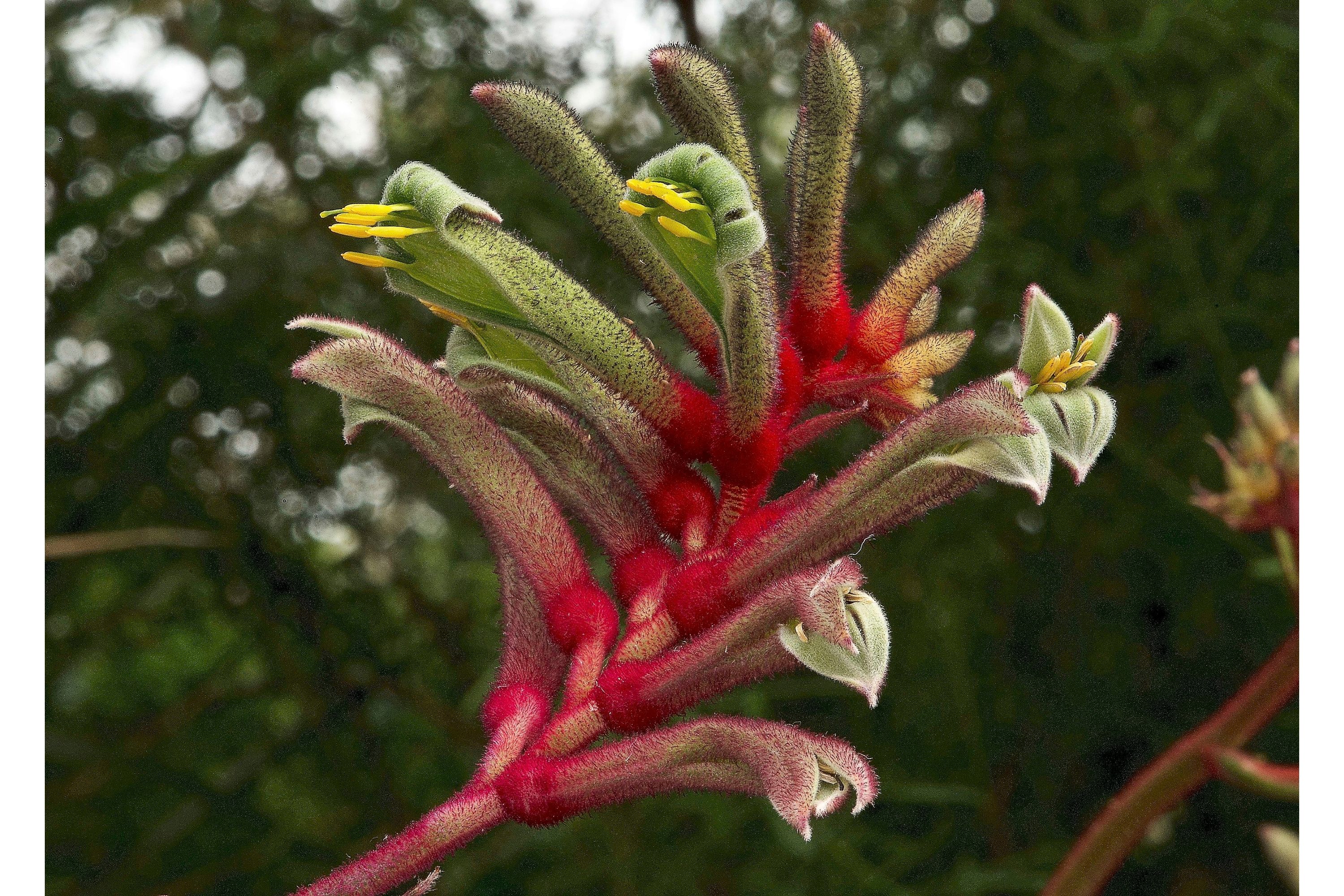Little kangaroo paw
(Anigozanthos bicolor)

Description
Anigozanthos bicolor, commonly known as little kangaroo paw or two coloured kangaroo paw, is a grass-like perennial herb native to the south western coastal parts of Western Australia. The rhizomatous plant typically grows to a height of 0.05 to 0.6 m (2.0 in to 1 ft 11.6 in) and blooms in spring between August and October producing green to yellow and red coloured flowers. The species was first formally described by the botanist Stephan Endlicher in 1846 as a part of Johann Georg Christian Lehmann's work Haemodoraceae as published in Plantae Preissianae. The only synonyms are Agonizanthos bicolor and Anigosanthus bicolor. It is found along the west coast from around Northam and Moora in the north down to around Albany in the south and has a discontinuous distribution to the east along the south coast as far as Cape Arid where it is commonly situated in damp or areas that are wet in winter or around granite outcrops or along road verges growing in clay, loam or sandy soils over granite or laterite as a part of open forest or low heathland communities. Anigozanthos is a genus of Southwest Australian plants of the bloodwort family Haemodoraceae. The 11 species and their subspecies are commonly known as kangaroo paw or catspaw, depending on their size, and the shape and color of their flowers. A further species, previously identified as Anigozanthos fuliginosus (black kangaroo paw), was separated to a monotypic genus as Macropidia fuliginosa. The species are recognised by their unusual flowers, numerous hybrids have been developed for cultivation and floristry. The red-and-green kangaroo paw is the floral emblem of Western Australia. These perennials are endemic to dry sandy, siliceous areas of southwest Australia, but they occur as well in a variety of other environments and soil types. They are grown commercially in Australia, the United States, Japan and Israel. The plant grows from short, underground, horizontal rhizomes. The length and the character of these may vary between the species: some are fleshy, others are fragile. The sap in the root system allows the plants to survive extreme dry spells. In summer, a number of species die back to the rhizome, growing back in autumn. The plants have a basal rosette of long green to greyish-green leaves. The leaves of some species are hairy. From the heart of this roset merge long leafless stalks, which can reach 2 m, ending in a raceme of flowers.
Taxonomic tree:







